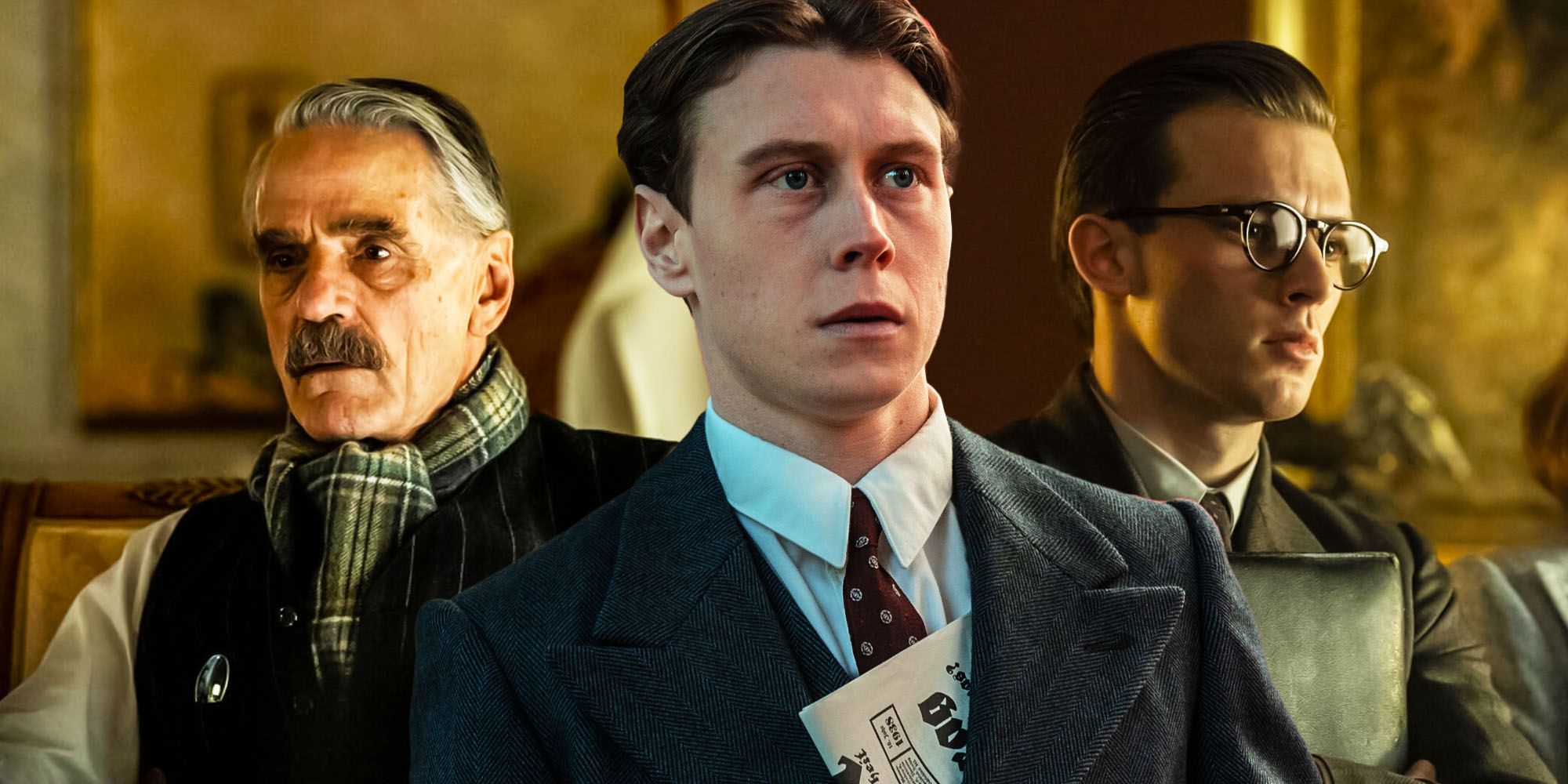
Netflix's Munich: The Edge of War transports audiences back to an authentic setting of a turbulent pre-war Europe, but how much of the film's story is accurate? Directed by Bad Banks' Christian Schwochow, Munich: The Edge of War is based upon the novel of the same name by eminent English writer Robert Harris, who specializes in works of historical fiction. This forte undoubtedly extends to the core of Munich: The Edge of War's narrative, so closely based on Harris' book, which blends historical fact with fiction to create an exhilarating viewing experience.
Munich: The Edge of War's story centers on the Munich Conference, a two-day summit held at the Bavarian city in September 1938, in which British, French, and other European government leaders met to discuss Adolf Hitler's (Ulrich Matthes) plans to dissect Czechoslovakia. The British delegation is led by the then Prime Minister Neville Chamberlain (Jeremy Irons), who is quickly shown to be willing to sacrifice his political career and name in the service of peace. Concurrently, diplomat Hugh Legat (George MacKay) is tasked by the British secret service to meet his old friend Paul von Hartmann (Jannis Niewöhner) in Munich and attempt to smuggle back incendiary documents exposing Hitler’s secret plans to control Europe by force.
Yet while Munich: The Edge of War makes for a pulsating 123 minutes of effective historical drama, its accuracy fluctuates heavily throughout its runtime. This is not to take anything away from the film's attention to detail as a period piece; however, with Munich: The Edge of War's filming locations, flawless sets, and costume designs eerily evocative of a Europe on the edge of conflict in 1938. Here's how much of Munich: The Edge of War's narrative is real and accurate, as well as the true story behind the 1938 Munich Conference.
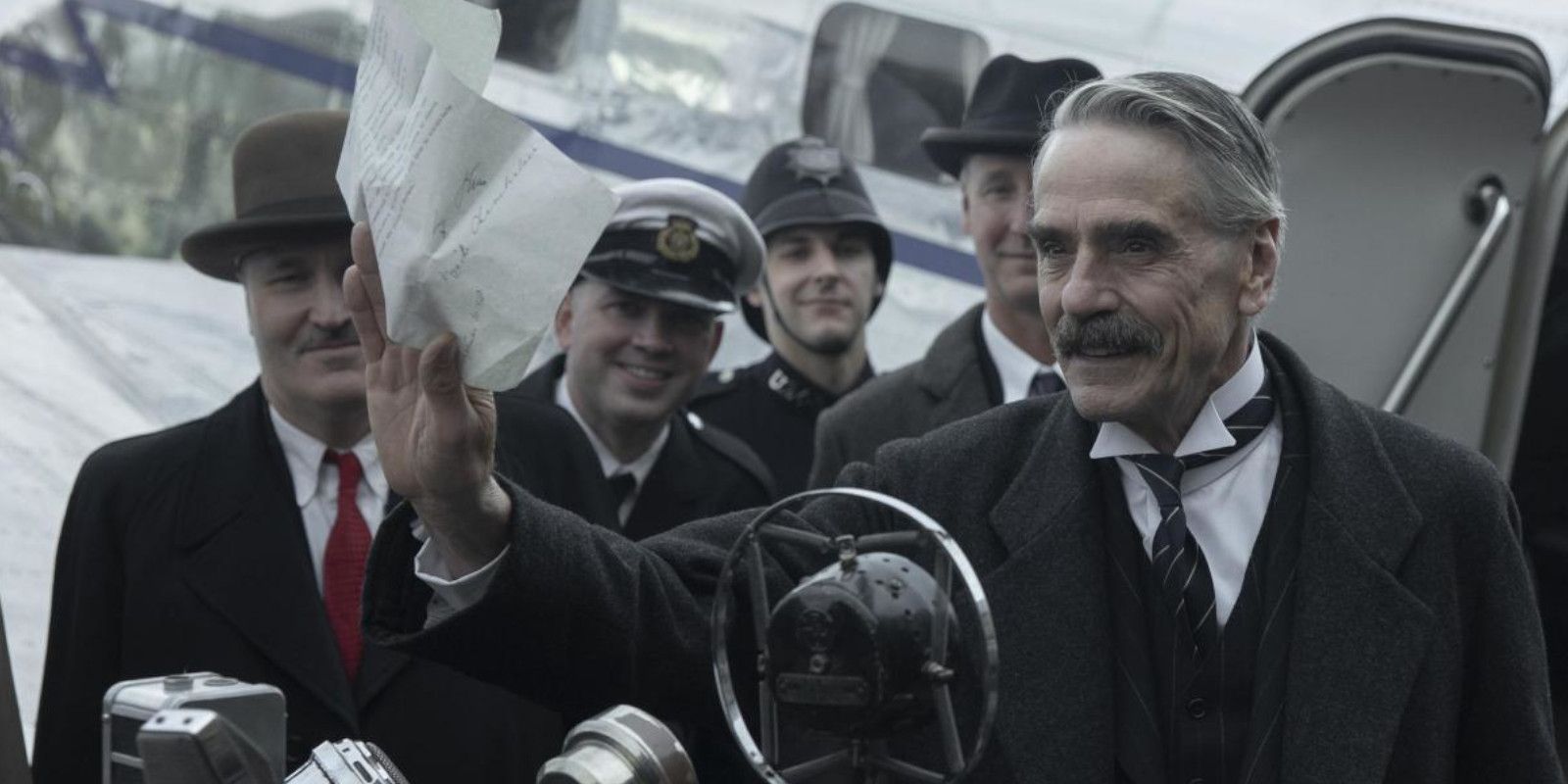
The entire backdrop of a pre-war Europe, Hitler's aggression, and a Prime Minister suing for peace are all entirely accurate, real-world events that form the crux of Munich: The Edge of War's narrative. In particular, Munich: The Edge of War acts as a revisionist re-telling of the events of the Munich Conference, in which the French and British delegations are seen by many to have released Czechoslovakia to be handed over to Hitler for dissection with a whimper. Hitler's insistence that Czechoslovakia would be the Third Reich's last conquest fooled the other European powers, with British Prime Minister Neville Chamberlain landing back home following the conference and declaring he had secured "peace in our time" due to the newly formed Munich agreement. There is also some truth to Munich: Edge of War's subplot to remove Hitler from power, with several failed (and arguably half-hearted) attempts made in 1938 to halt his totalitarian Nazi dictatorship and ambitions of conquering Europe for Germany.

A significant chunk of Munich: The Edge of War's story details Legat and Hartmann's attempts to deliver Hitler's explosive European invasion plans into British hands. The pair are doggedly pursued by Sauer (favored Quentin Tarantino actor August Diehl), a mysterious and threatening SS member, with Hartmann and Legat's taut storyline making up the majority of the action sequences in Munich: Edge of War. While the character of Hugh Legat is entirely fictional and injects needed impetus into Munich: Edge of War's narrative, Paul von Hartmann's story does indeed draw some truth from real events from 1938 to 1944.
Hartmann is loosely based on the real-life anti-Nazi diplomat Adam von Trott zu Solz, a German lawyer and politician involved in the conservative resistance to Nazism during Hiter's rise to power. A declared opponent of the Nazi regime from the beginning, he actively pursued avenues to thwart Hitler's plans, with Trott attempting to broker talks between other members of his conservative party and British officials (including Chamberlain himself) in 1939. After appeasement failed and World War II began, Trott became one of the leaders of Colonel Claus von Stauffenberg's plot to assassinate Hitler in July 1944, although this plot also failed and led directly to Trott's execution that same year.
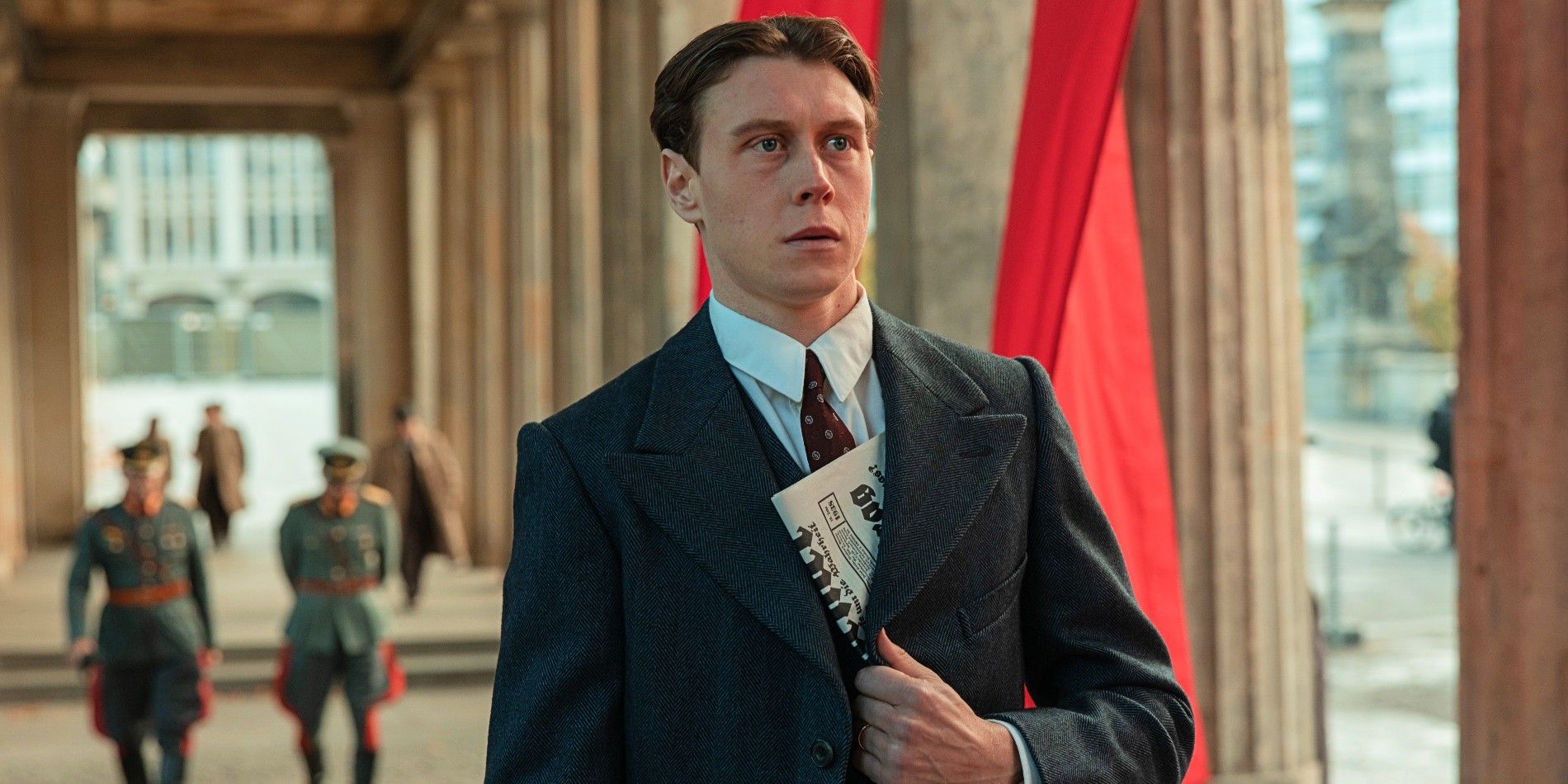
While Munich: The Edge of War paints Neville Chamberlain in a heroic, revisionist light as a man prepared to sacrifice everything to spare Europe the horrors of war, the truth is far less kind to the former British Prime Minister. In reality, it was Chamberlain's insistence on his party policy of appeasement towards Hitler from which other politicians took their queues, emboldening the Nazi leader and all but green-lighting his immediate invasion of Czechoslovakia during the Munich Conference. Chamberlain's insistence on brokering "peace in our time" blinded the British diplomat to Hitler's nefarious intentions, with his appeasement policy used as a warning against dealing with dictatorships to this day.
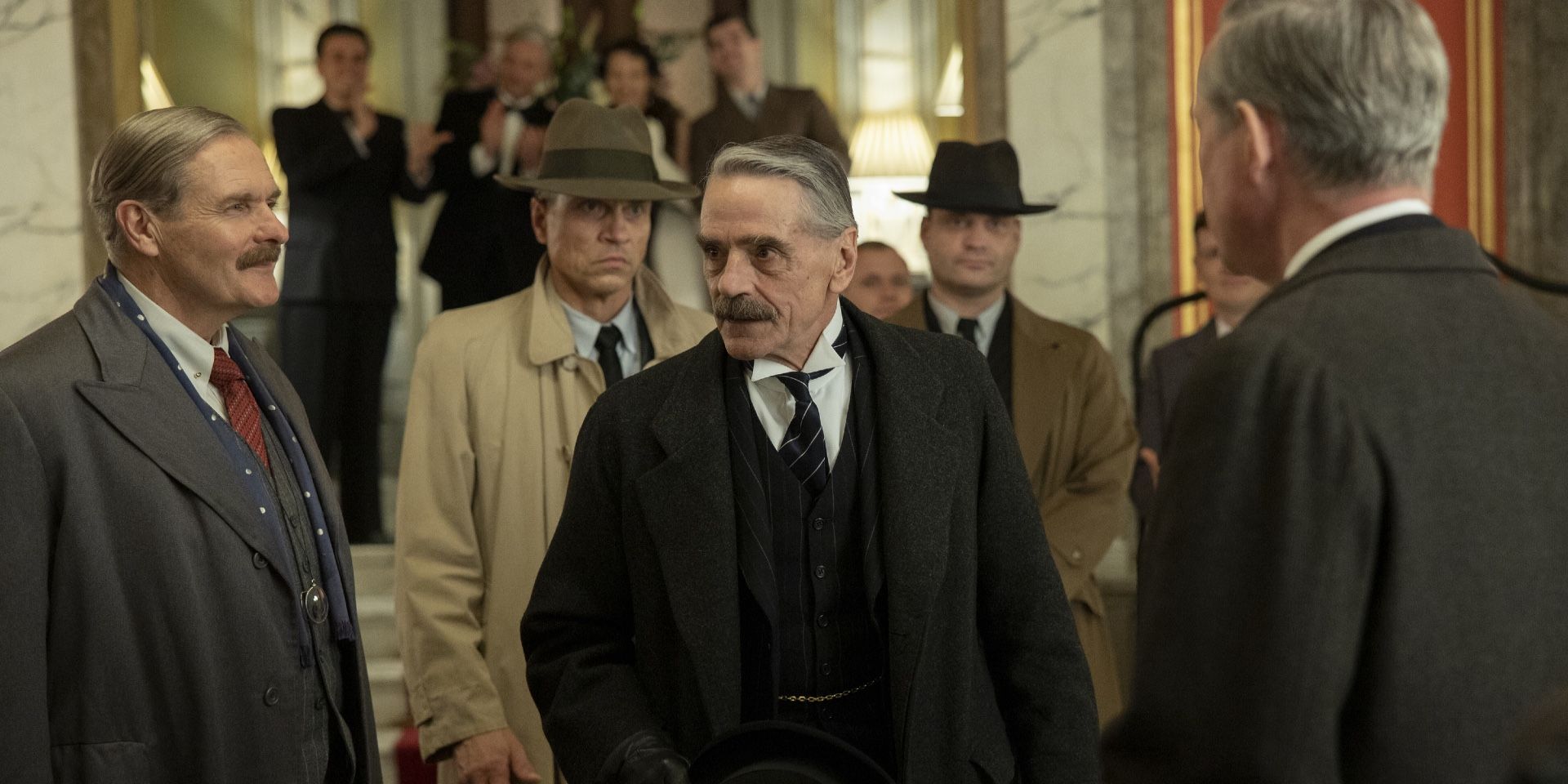
In line with Munich: The Edge of War's events, there was indeed a real, even stranger conspiracy by anti-Nazi officers and officials in 1938 to dethrone Hitler, although the plan's contingencies were slightly different. In real life, Trott, in particular, had lain careful plans for a putsch in which Hitler would be murdered during an outbreak of violence in Munich. However, this bold plan was only to be enacted if Chamberlain and other European leaders held firm and denied Hitler his expansion plans at the Munich conference, a stance which unfortunately did not come to pass. While Trott managed to meet with Chamberlain (albeit far too late) in 1939, this plot eternally remained shelved in favor of the more daring "20 July Plot" made famous to international audiences in Valkyrie.
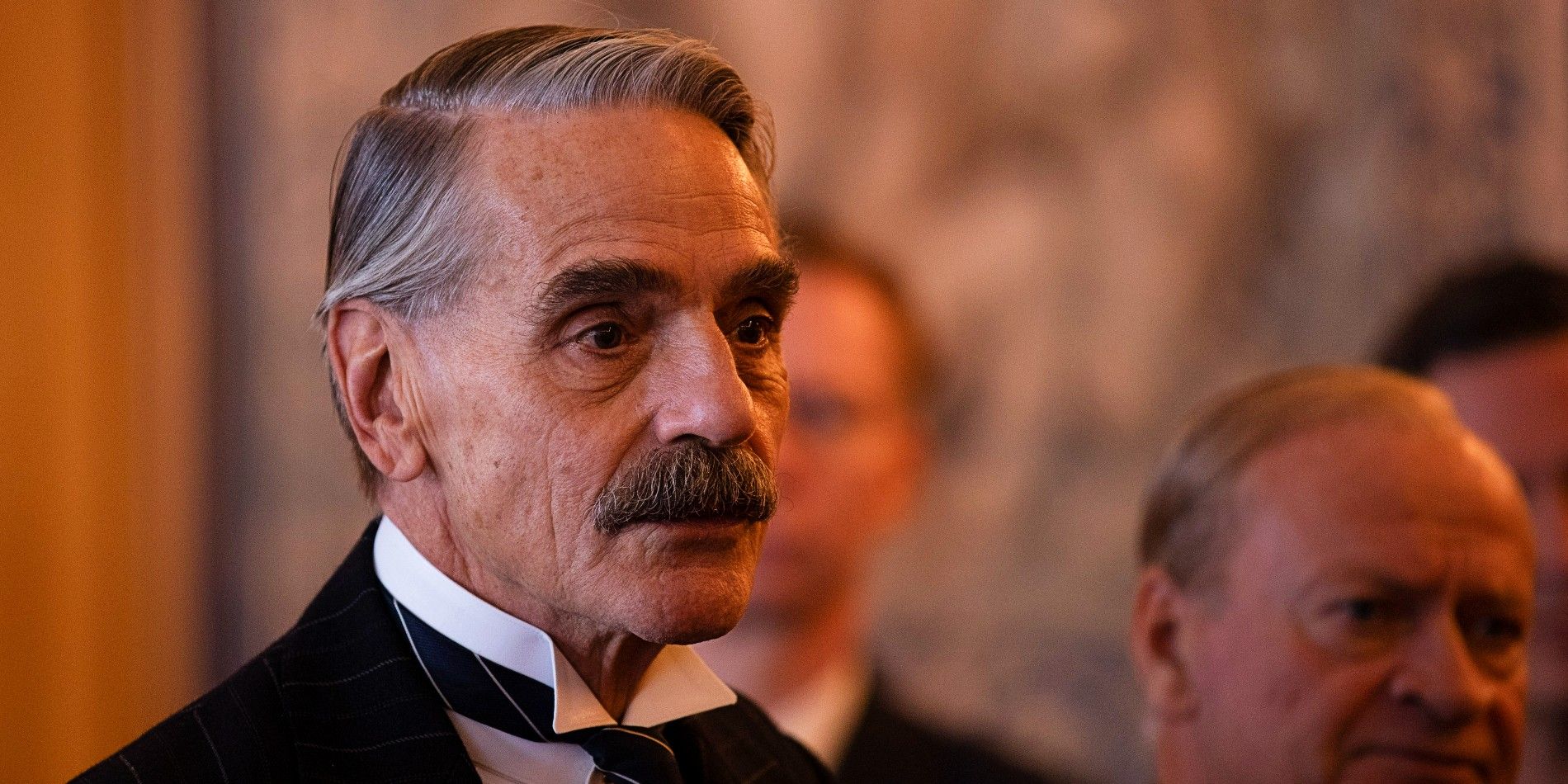
Although Munich: Edge of War is a thoroughly enjoyable, well-acted piece of cinema, very few of its real-life characters are historically accurate. The aforementioned Chamberlain is portrayed by House of Gucci's Jeremy Irons as a genuinely selfless political hero when in actuality, many historians believe it was his hubris and weakness that gave Hitler the confidence to rip up the Munich Agreement less than six months after it was signed. Other primary characters, such as Trott, are also glossed over with a brush for Western audiences, with Trott's German nationalist ties, overtly racist views, and voracious political ambitions omitted to make him a likable protagonist. In actuality, only Ulrich Matthes' spellbinding portrayal of Adolf Hitler aligns with real events, with the German actor capturing the Führer's evil ambition with absolute gusto. Munich: The Edge of War tells its version of the Munich Conference in compelling detail, but it remains largely a work of fiction nonetheless.
from ScreenRant - Feed https://ift.tt/3tT0hKV
0 Comments
Please don't use vulgar comments and avoid discussion on Religious matters